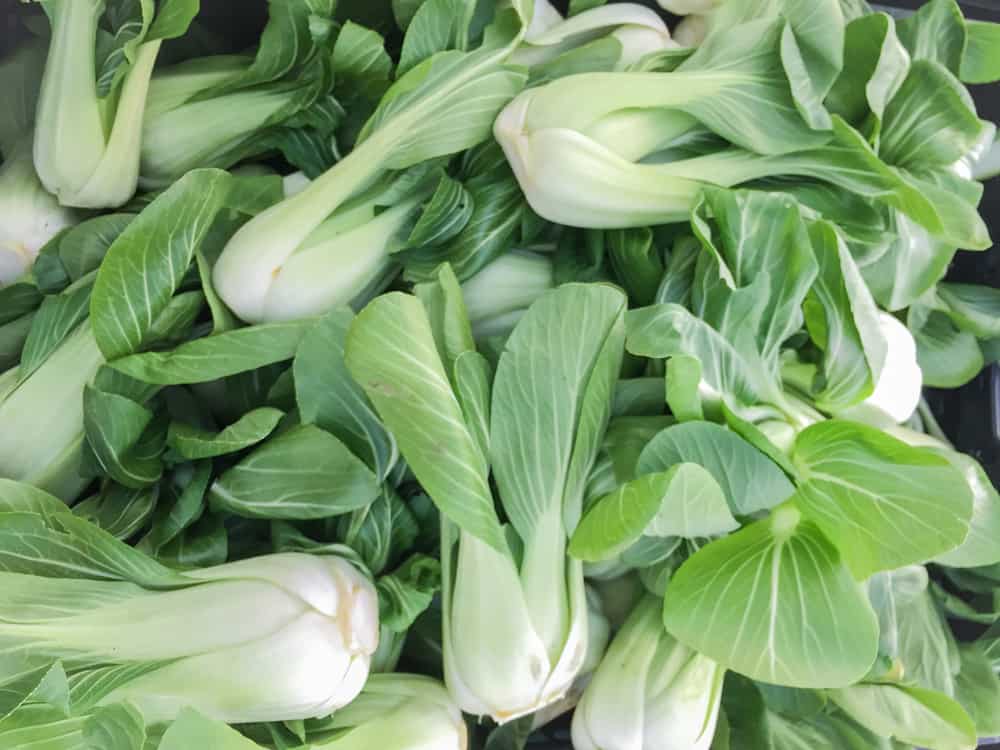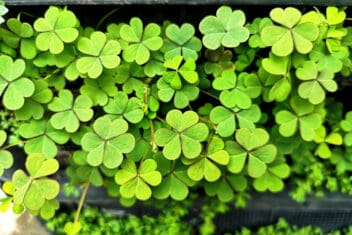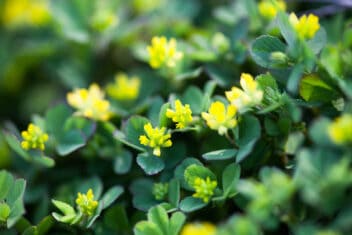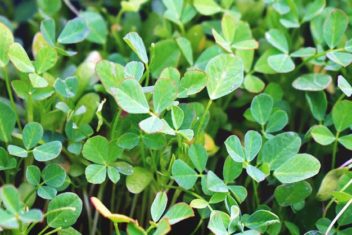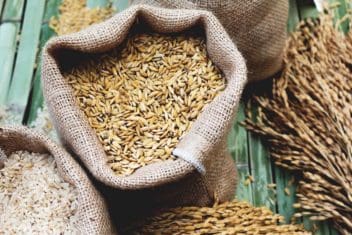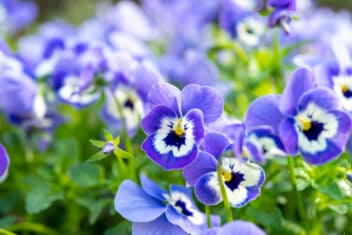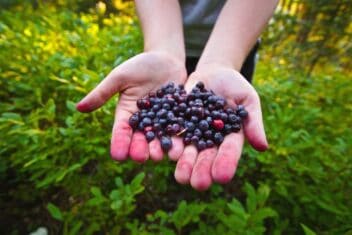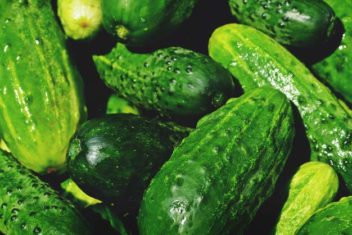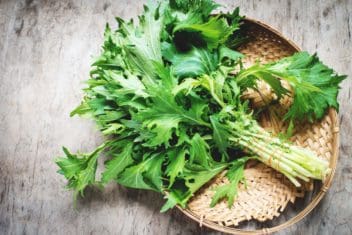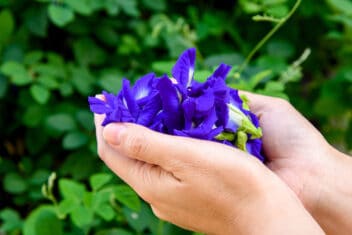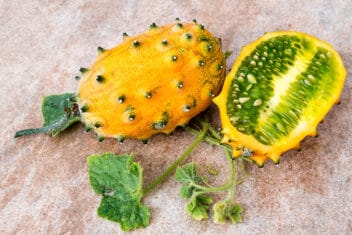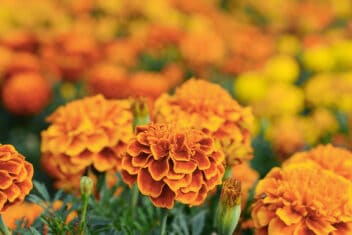This luscious green is a mainstay in Asian cuisine and it’s easy to see why. It’s a member of the cabbage family, and has a delicious, moderately sweet flavor and crunchy texture. Pac choi is easier to grow than many other brassicas and does exceptionally well in containers.
It’s packed with vitamins A, C, and B6, as well as beta-carotene and iron. It has more magnesium, calcium, and vitamin K than most other brassicas, however, and is excellent for bone health. Beyond all the health benefits, it’s incredibly delicious, too.
Read on to learn how to cultivate this tasty, nutritious green in your own garden. We’ll cover potential pests, predators, and other problems, as well as optimal conditions for a prolific harvest.
Best Pak Choi Varieties
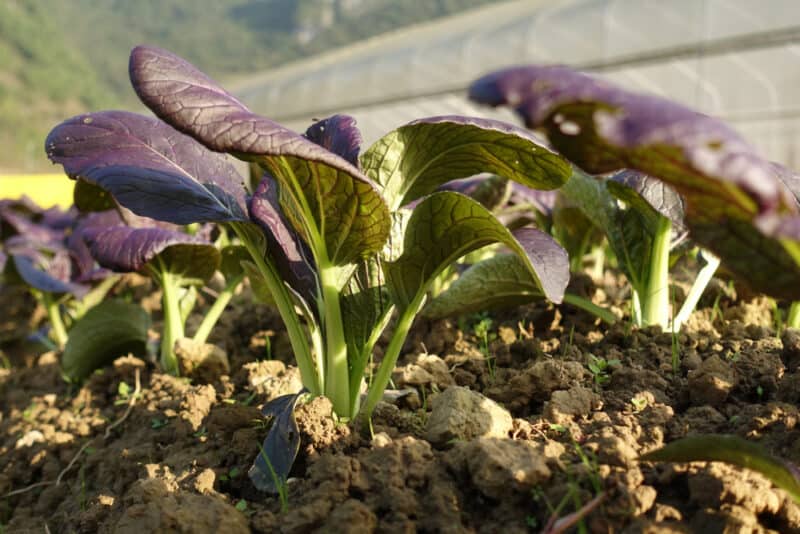
Pak choi (Brassica rapa subsp. chinensis), also spelled pak choi or pac choy, is related to cabbage, Brussels sprouts, kale, and other members of the Brassicaceae family. It comes in dozens of named cultivars, from itty bitty ones to full-sized heads.
Aim for dwarf or miniature varieties if you’re growing in raised beds or containers. Additionally, if growing in containers, you should use a very well-draining potting soil mix rather than standard garden soil. Otherwise, the soil will compact and your plants won’t thrive.
Hedou
The heads on ‘Hedou’ are absolutely miniature, each one the right size to pop in your mouth. Ready to snack on in just 35 days.
Baby Milk
The stems of ‘Baby Milk’ are creamy white, which makes a nice contrast against the deep green leaves. This mini cultivar matures in under 45 days.
Sozhou
‘Sozhou’ produces tightly packed, medium-sized, flavorful heads that are ready in about 50 days.
Shanghai
This is a petite cultivar with deep jade-colored leaves. Matures in 35-45 days.
Bopak
This cultivar produces full-sized heads that have a mild flavor and creamy white stems. Ready in 50 days.
Joi Choi
‘Joi Choi’ has large heads that reach up to 15 inches tall. The stems are pale cream and the leaves a medium green. Matures in 50 days. It’s a bit more heat resistant than other varieties. Grab some for your garden at Amazon.
Li Ren Choi
This is a baby cultivar with proportional heads and green stems that is ready for harvest in 35 days.
Rosie
‘Rosie’ lives up to its name with bright red or purple leaves on green stems. The plant reaches about 12 inches tall and can be harvested as a baby at just three weeks, or let it mature fully and eat at 45 days.
Asian Delight
If you have struggled with bolting problems in the past, this is a good cultivar to try because it is slower to bolt than others. It’s medium-sized and ready to harvest in 35 days.
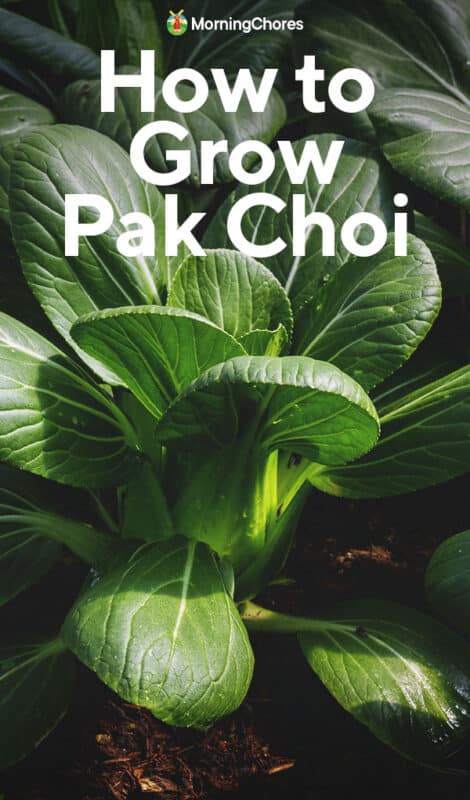
Planting Pak Choi
Remember that pac choi grows best in cool weather, so it’s not ideal for USDA Growing Zones above 9. For Zones 6–8, cultivate it as a spring or autumn crop, avoiding midsummer heat. Zones 3-5 can get away with spring, early summer, and autumn plantings, as long as it’s not grown over the two hottest summer months.
Since it’s quite a hardy green, it can be grown well into wintertime if covered. Greenhouses, plastic tunnels, cold frames, and cloches can all help extend its growing season exponentially. Furthermore, pac choi gets sweeter and more tender after exposure to cold.
If you do a spring planting, cultivate beans or peas in your brassica bed during the summer. This will fix some extra nitrogen into the soil for your autumn pac choi planting. With just a bit of careful planning and care, you can look forward to an abundant harvest of sweet, tender, nutritious greens twice a year.
Like other cabbage cousins, pak choi plants are heavy feeders. They need rich, well-draining soil and a significant amount of sunshine. They can grow in partial shade, provided that they get several hours of direct sunlight at some point during the day.
That said, this is a cool-weather crop. Much like kale, collards, and cabbages, it grows best in spring or autumn—not summertime. It’ll bolt in the intense summer heat, especially if it gets a ton of sunshine.
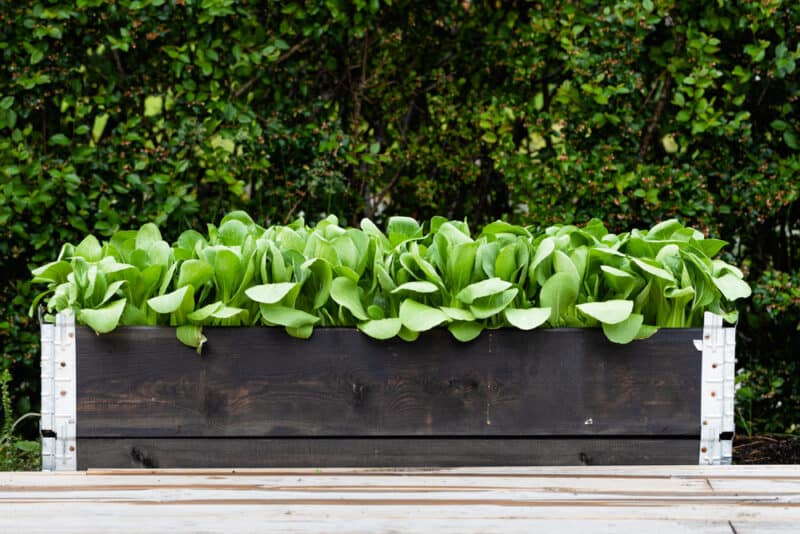
You can grow pac choi directly in the ground, or else in raised beds or containers. Just make sure to work plenty of well-aged compost into the soil before planting, as well as a draining medium like perlite or lava rock.
If you raise rabbits or deer, their droppings are ideal to add to your vegetable beds. They’re high in nitrogen and provide many other vital nutrients for your plants’ health. Pac choi thrives best in soil that’s slightly acidic, so you can add some peat moss to the growing medium while you’re at it.
Sowing Seeds
If you’re growing this vegetable from seed, you can either sow directly or start the seeds in flats six weeks before the last frost date. Plant seeds approximately 1/4-inch deep, and about one inch apart. Miniature varieties can be planted 1/2-inch apart instead. Allow approximately 12 inches between rows so the plants have enough room to stretch out as they grow.
Sowing successively every couple of weeks will let you harvest continuously throughout the season. Additionally, if you grow more than you think you’ll need, you can harvest some of the plants when they’re small, while allowing others to develop to full maturity. This type of thinning will allow you to enjoy some tender, young plants as the others mature. Harvest mature plants when they’re about six inches tall.
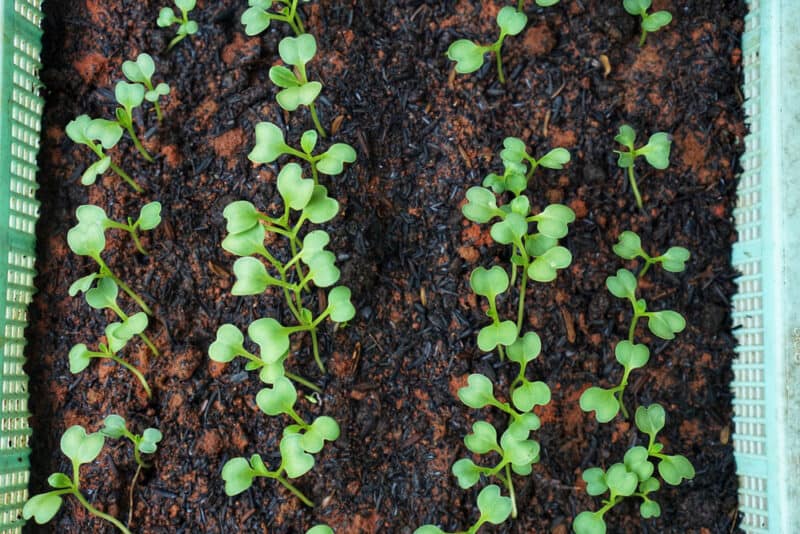
These plants don’t grow tall, so you don’t need to provide cages or any other support structures.
Caring for Pak Choi
Pak choi is a bit thirstier than other cabbage relatives, and its roots need to be kept consistently moist. These plants can—and will—bolt if they don’t get enough water. Mine have gone to seed during a sudden heatwave simply because I didn’t water them twice a day.
If you live in an area that’s prone to drought-like conditions, be sure to rig up a drip line system. Not only will this keep the roots moist, it’ll avoid powdery mildew from overhead watering.
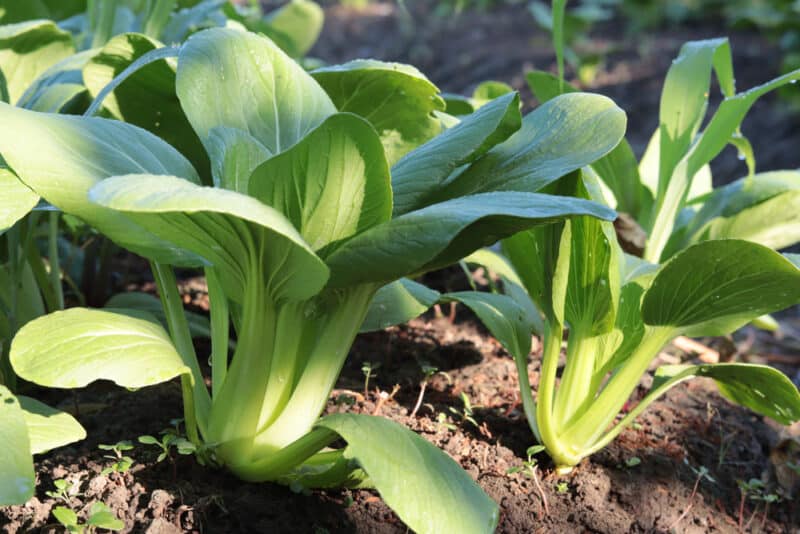
While these plants are heavy feeders, they prefer not to be fed during the growing season. Work your fertilizers into the soil before planting, making sure to add plenty of nitrogen and potassium. Then just keep them well watered, and don’t offer any fertilizers, compost tea, etc. while they’re maturing.
Best and Worst Companion Plants for Pak Choi
Interplanting with onions, mint, sage, rosemary, and nasturtiums can provide great companion benefits. These herbs repel harmful insects and can improve pac choi’s flavor.
Avoid planting this crop near other brassicas like kale, broccoli, cauliflower, or rapini. They’ll compete for resources, and pests drawn to one species will obliterate the others, too.
Other poor neighbors for pac choi include tomatoes, peppers, eggplant, strawberries, and dill. These can stunt growth and affect flavor development.
Potential Pests, Diseases, and Problems
Pac choi can suffer from fungal diseases. To avoid these, water at ground level rather than from overhead. If you do have to water from above, then do so early in the morning so the water has plenty of time to dissipate over the course of the day.
Since pac choi is a member of the Brassicaceae family (as mentioned earlier), you can be sure that cabbage-loving pests love it too. I’ve experienced significant crop loss thanks to cabbage white butterflies, cutworms, and tent caterpillars. If you’re growing pac choi, expect and learn how to deal with pests.
Downy Mildew
Downy mildew (Peronospora parasitic) is exceptionally common. It appears as white, yellow, or brown spots on the leaves. These eventually spread and the entire leaf dies. Beyond watering at the soil level, as mentioned above, you should also keep weeds out of your garden. For more info, check out our guide.
Alternaria
Also called leaf spot, this fungal disease (Alternaria brassicae), as you’d expect, causes spots to form on the leaves of the plant. Usually, the spots are darker on the center and lighter on the exterior. It’s more common when the weather is cool and wet.
Copper fungicide is an effective product for treating a plant infected with this disease.
Mosaic Virus
These plants can also contract mosaic virus. As there’s no cure for this issue, your only option is to tear up and burn affected plants. The best bet for mosaic virus control is to plant virus-resistant strains. You should be able to find these at your local garden center. You can find resistant cultivars if this has been a problem in your garden.
Bacterial Soft Rot
Caused by the bacteria Erwinia caratovora, this disease causes water-soaked black lesions to form on the leaves. These lesions ooze liquid and eventually merge together, causing the entire leaf and stem to turn into a rotten mess. There’s no cure, so avoid it by cleaning your tools in between use and rotating your crops.
Cabbage Whites
Any plant in the cabbage family is susceptible to cabbage white caterpillars. In fact, these little pests have been a problem for so long that scientists have found that they’re part of the reason plants such as wasabi and mustard developed their pungent flavor as a method to deter the butterflies from landing.
While you can hand-pick the caterpillars off the plants, if you have a large infestation, you’ll need to break out the big guns.
If you’ve never used Btk before, check it out. This stuff (Bacillus thuringiensis var. kurstaki) is a gram-positive bacterium that occurs naturally in soils worldwide. It pretty much obliterates caterpillars and other leaf-devouring insects without harming any beneficial species. You can find the concentrate or ready-to-spray containers at most garden centers or online retailers like Amazon.
Of course, if you’d like to avoid sprays, you can stick with floating row covers. These are great for keeping any flying insect at bay, which is great because pac choi can be vulnerable to aphids and whiteflies. Since cabbage worms and root maggots are larvae from fly species, the row covers and/or Btk will help to eliminate those issues too.
As an added bonus, row covers can help fend off slugs and snails, and can keep groundhogs, bunnies, and other herbivores out of your greens as well.
Aphids
Cabbage aphids (Brevicoryne brassicaea) can cause stunted growth and yellowing of leaves. In large enough numbers, they can even kill your pak choi entirely. Our guide to aphids can help you avoid or eliminate an infestation.
Harvesting and Preserving
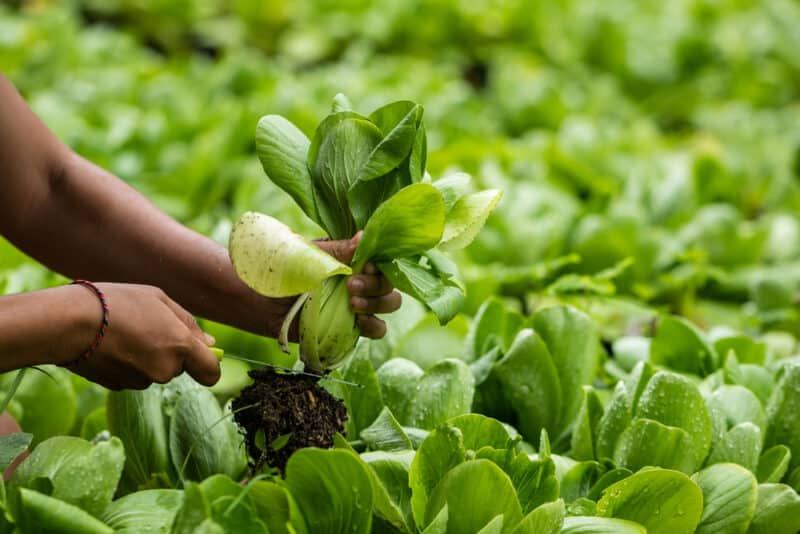
As mentioned, you can harvest throughout pac choi’s growing season. In fact, you can just trim the leaves down to crown level, and they should grow back for a second (or even third) harvest. These secondary and tertiary leaves won’t be as large as the previous, but they’ll be just as tasty.
When it comes to preservation, you have a few different options available to you. Since this is a fleshy vegetable rather than a leafy one, you can’t make it into chips like kale or collards. You can, however, transform it into rather spectacular kimchi. Pac choi ferments beautifully and is also tasty as sauerkraut.
If you’d rather freeze it, then blanch it first in small batches. Then divide it into portion sizes and pack it into freezer bags. Store these in your freezer for up to a year. You can also braise these vegetables and pressure can them if desired. Just follow the instructions that come with your pressure canner.
